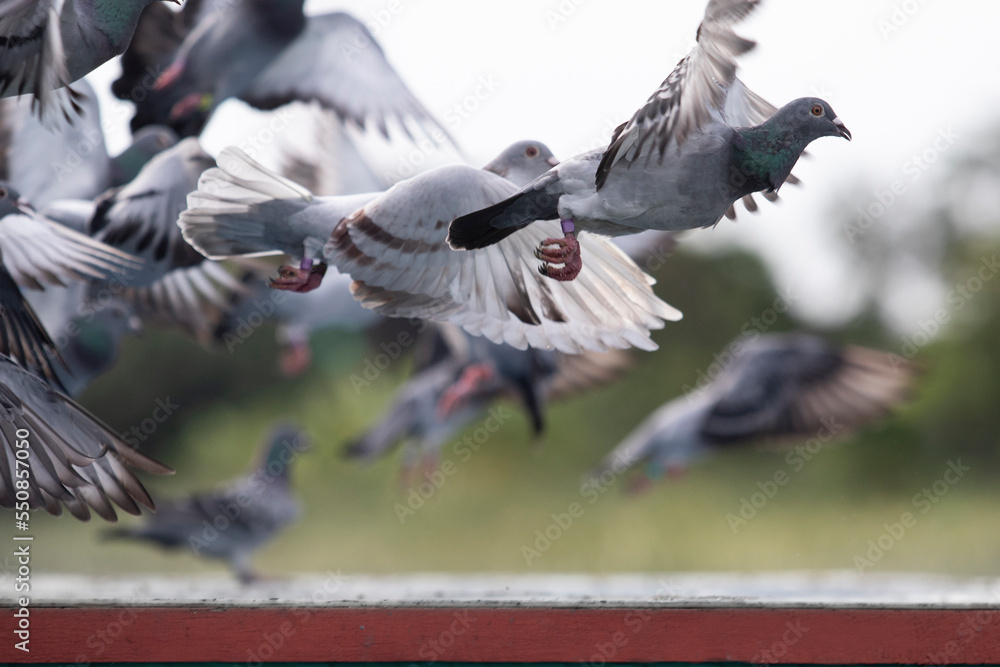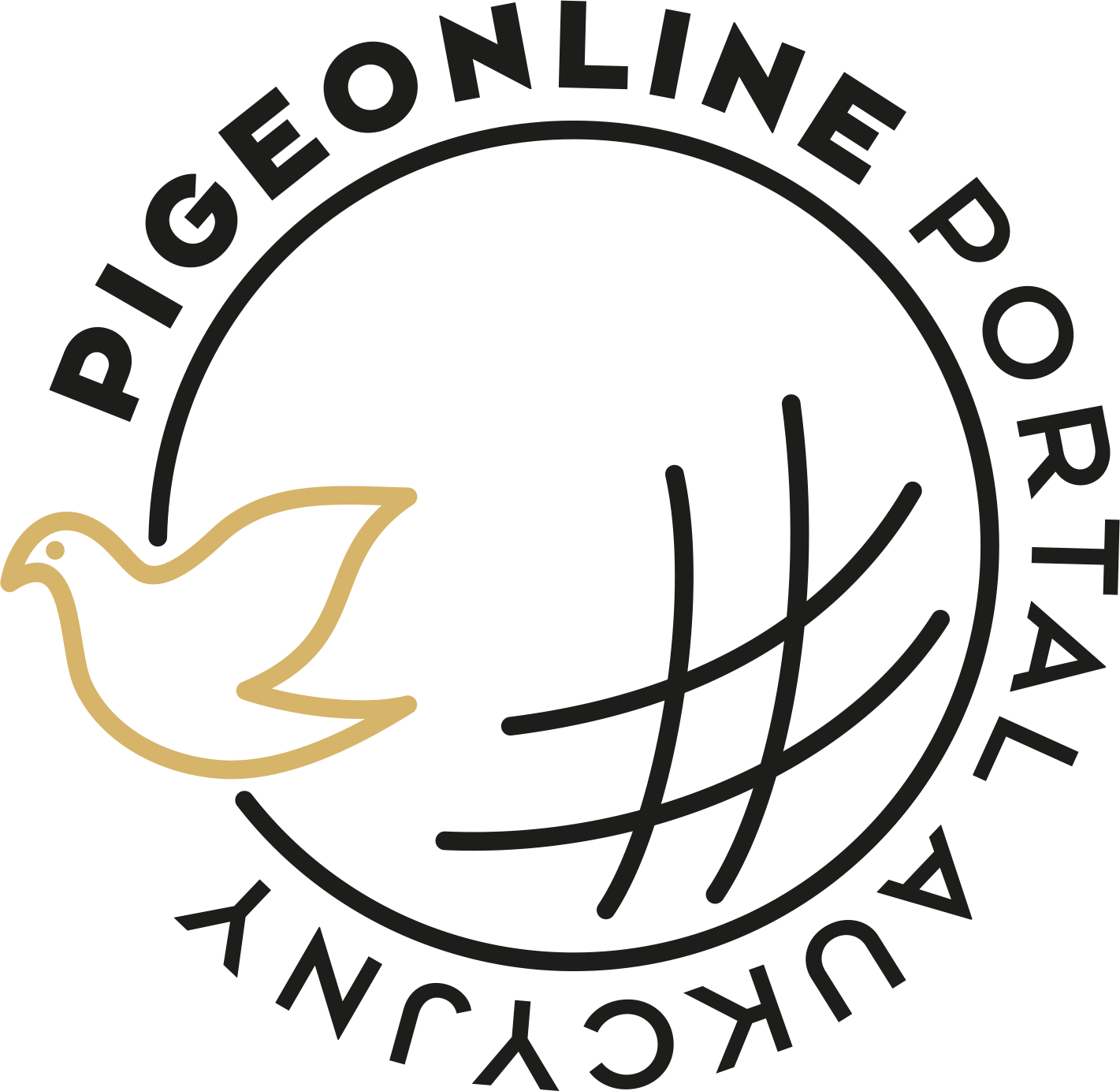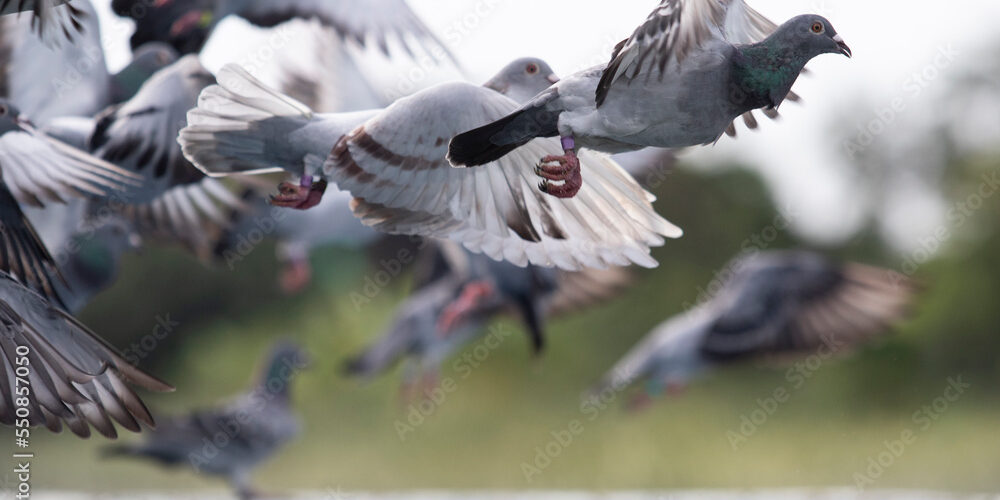Hello and welcome.
We begin a series of articles with the topic of keeping pigeons in winter, which will help you look at the most important issues in breeding sports pigeons. There are many systems for keeping pigeons during the winter rest. I will share my observations on this topic, and of course I will leave it to you to assess the validity of using this system.

To talk about keeping pigeons in winter we must first of all consider a very important issue, which is the location and construction of a given dovecote. Let's think together about what problems you are dealing with. Why am I talking about this, namely because the care of pigeons that are kept in an open dovecote on slats in the south of our country, where winters are usually more frosty and windy, is completely different than in closed dovecotes where the weather is slightly milder . Dear colleagues, the vast majority of people are aware that the racing season begins with the end of the last flight of the previous season, therefore everyone begins preparations for the season of replacing feathers in pigeons very intensively.
Pigeons eat very good quality feed mixtures, are also very intensively supplemented at this time, etc. Additionally, if your birds do not have access to flights during this period, there is a very thin line separating the moulting period from the winter period. What I mean is the time when the pigeons begin to lose their very good appetite, which accompanies practically the entire period of feather replacement. This usually happens when the birds have replaced their cover feathers and only the two longest flight feathers of the first row remain. Dear breeders, this period begins regardless of the date on the calendar winter rest period because replacing the two feathers mentioned above does not pose too much of a burden for the birds. That's when it's time to calmly change the feed mixture from moult to winter. At this point you should consider what system you will use to keep your pigeons in winter the most optimal for your birds. To put it more clearly, the qualitative composition of the feed will look completely different for a breeder whose pigeons spend most of their time in winter open aviary where they are directly exposed to cold and wind, or in other words, where the pigeons live closed dovecotes without any particular changes in temperature or other external factors.
We can hear opinions that pigeons eat a good quality mixture throughout the winter and are additionally supplemented, and we can also hear voices saying that this is a time of rest, cleansing, calm and peace. Regardless of which system you support, you must also consider what lofts your pigeons will spend the winter in. As you probably already guessed, I am a supporter of the old Polish school of quieting pigeons in winter as much as possible, the natural side of this system has always convinced me of its validity. It is very important at this point whether your pigeons are already closed after the racing season, do they have daily access to flights. As you can easily guess, pigeons flying in winter may have enriched food mixture due to greater energy requirements than birds that have been confined for several months. Why I think this topic is so important, because the most serious mistake is too much weight gain by pigeons that are supposed to win quick competitions, but also breeding pigeons that give hope to every breeder for the next season cannot be, colloquially speaking, simply saved. The problem of stuck pigeons affects primarily yearling racing pigeons, because, as you have probably noticed, adult racers selected over the last few seasons do not tend to gain weight.
Have you ever analyzed why the adult, best fliers in your lofts are not too heavy??? In my opinion, it tells them mother Naturethat they will soon have to work hard and carrying unnecessary weight is completely unnecessary. Someone will say "eeeeeeeeeeeeeeeeeeeeeeeeeeeeeeeeeeeeeeeeeeeeeeeeeeeeeeeeeeeeeeeeeeeeeeeeeeeeeeeeeeeeeeeeeeeeeeeeeeeeeeeeeeeeeeeeeeeeeeeeeeeeeeeeeeeeeeeeeeeeeeeeeeeeeeeeeeeeeeeeeeeeeeeeeeeeeeeeeeeeeeeeeeeeeeeeeeeeeeeeeeeeeeeeeeeeeeeeeeeeeeeeeeeeeeeeeeeeeeeeeeeeeeeeeeeeeeeeeeeeeeeeeeeeeeeeeeeeeeeeeeeeeeeeeeeeeeeeeeeeeeeeeeeeeeeeeeeeeeeeeeeeeeeeeeeeeeeeeeeeeeeeeeeeeeeeeeeeeeeeeeeeeeeeeeeeeeeeeeeeeeeeeeeeeeeeeeeeeeeeeeeeeeeeeeeeeeeeeeeeeeeeeeeeeeing talk," but this is seriously one of those unexplainable information and signalsthat we get from our pigeons. Here, the statements of excellent, experienced breeders about keeping a close eye on their pigeons, because they show us everything, come true. We spend our whole lives learning to "read" them.
Now some specifics from my experience to avoid problems in the spring during first spring flights I will tell you what driving system I preferred.
Adult pigeons were locked up practically a week after the last competition flight. After another week, I put the fliers into pairs and allowed them to raise one brood of young, the subsequent eggs laid were replaced with artificial ones, and after the pigeons hatched from these artificial eggs, the moulting period began. I will describe what the feather replacement period should look like in one of the next articles, when we are about to moult. So let's agree that it's already winter and the pigeons are at the stage of shedding their last feathers.
Composition of the food mixture looks like this:
- barley 30%
- corn 10%
- wheat 10%
- Beyers elite no. 43 – 25%
- oats 10%
- milk thistle seeds – 5%
- black sunflower – 5%
They were fed during the period preceding this period very good feed mixtures and additionally supplemented, so we cannot completely stop using the preparations we have been feeding our pets for the last 2-3 months. Therefore, we add dietary supplements to the above-mentioned mixture, but in doses limited to a maximum of 1/3, and we also carefully control the weight of our pigeons. The pigeons are fed with this mixture until mid-January inclusive, unless a given breeder intends to exhibit his pigeons at a district exhibition, so this time is usually around mid-December, then the pigeons should be fed separately and the "exhibits" prepared appropriately. Back to the topic. We are in the period around January 15 - at this time the feed mixture should, in my opinion, look like this:
- barley 20%
- Beyers 43-15%
- black sunflower-5%
- corn 10%
- oats 50%
The pigeons were fed with this mixture until about February 10, then we start preparing for it pairing, we do not radically change the feed mixture, however, to stimulate the pigeons, we replace oats with hemp seeds and milk thistle.
When it comes to the correctness of carrying out the treatment in winter, I am absolutely sure A FOLLOWERto protect pigeons against trichomoniasis and worms with natural preparations, and against e-coli, salmonellosis, hexalottes with proven medicines and here I sincerely recommend it Baytril 10% from Bayer By 14-21 days depending on need.
The next article will cover preparing pigeons for the first spring flights and preparing pigeons for the racing season…
Thank you for the time spent reading together, I cordially invite you to visit the tab ARTICLES!!! I will try to answer your questions, my dear colleagues, in a way that is understandable to everyone
Marcin Pawlak


One comment
Dzięki Panie Marcinie